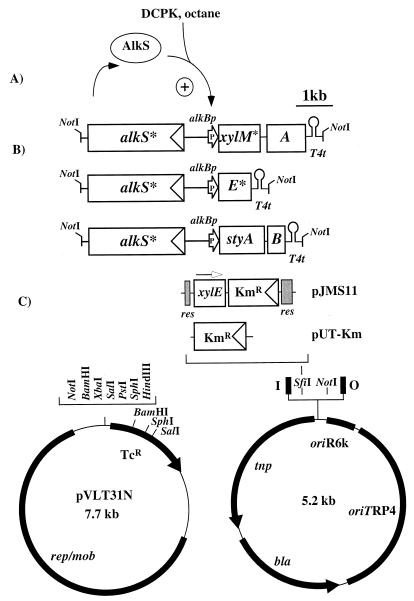FIG. 1.
Function of the alk regulatory system and structure of the genetic elements used in this study. (A) The regulator protein AlkS is activated by interaction with DCPK or n-octane and initiates transcription from alkBp. (B) NotI fragments of plasmids pSPZ2MA, pSPZ2AB, and pSPZ2E for the synthesis of xylene oxygenase, styrene monooxygenase, and catechol-2,3-dioxygenase, respectively. The drawing is to scale. Asterisks indicate that the wild-type gene has been engineered to eliminate internal NdeI sites. Arrows indicate heterologous promoters, and triangles within boxes indicate homologous promoters. T4t, phage T4 transcriptional terminator. (C) Plasmids that received the NotI cassettes shown in panel B. The drawing in the upper part is to the same scale as in panel B. The open arrow indicates the direction of transcription of the promoterless xylE gene. The two cassettes shown are inserted in the SfiI site of the basic vector and give rise to the two mini-transposon delivery plasmids pJMS11 and pUT-Km. The grey boxes represent the two res sequences that are the substrate of the RP4 resolvase. The mini-transposon is defined by the I and O ends (black boxes).

